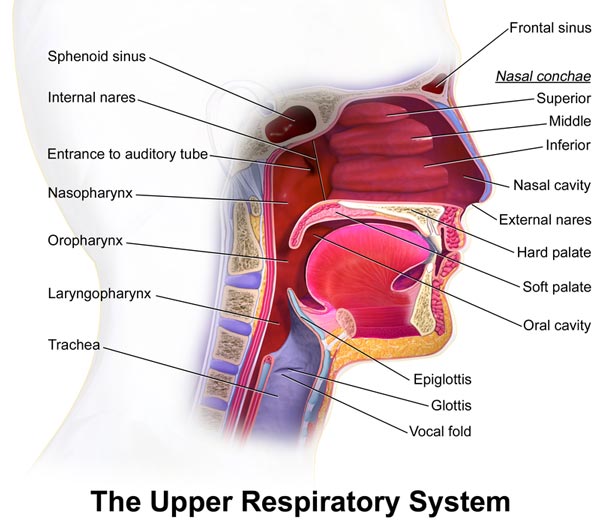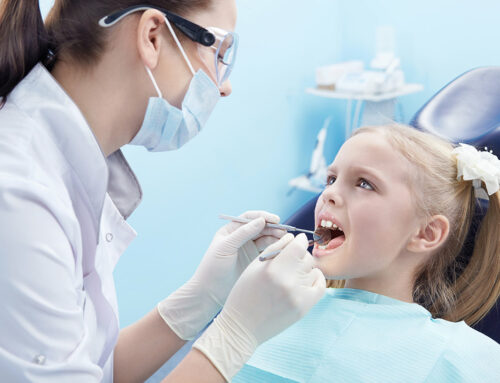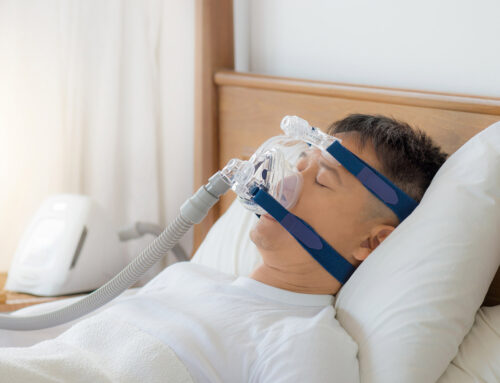Upper Airway Resistance Syndrome (also known as UARS) is a sleep disordered breathing condition similar to obstructive sleep apnea. It’s definitely less well-known than obstructive sleep apnea, but working with patients who have Upper Airway Resistance Syndrome is still a big part of my myofunctional therapy practice.
As the name implies, Upper Airway Resistance Syndrome involves resistance to breathing in the upper airway. In this respect, it’s similar to obstructive sleep apnea because of the involvement of soft tissues including the nasal cavity, soft palate, uvula, tongue, and pharnyx.
What Causes Upper Airway Resistance Syndrome?
People who suffer from Upper Airway Resistance Syndrome experience sleep disordered breathing because the muscles and tissues of the upper airway relax at night. This often occurs in combination with an already narrowed airway, usually due to changes in craniofacial development.
When these muscles and tissues relax, the size of the airway is reduced. This causes a restriction (or resistance) to the airflow moving in and out of the lungs.

Image copyright Blausen.com staff (2014). “Medical gallery of Blausen Medical 2014”.
Once the human body senses that it’s not getting enough air and therefore enough oxygen, it will react by causing a short arousal or awakening state to increase the respiratory effort and restore breathing. Even though this brief interruption from sleep may not be at all noticed by the sleeper, it effectively interrupts healthy and natural sleep patterns because it happens many times each hour through the night.
These arousals are known as RERAs (Respiratory Effort Related Arousals). A RERA is defined as an obstructive event that doesn’t meet the objective criteria for obstructive sleep apnea but still causes an arousal from sleep.
How Is Upper Airway Resistance Syndrome Diagnosed?
People who have this condition may not even be aware of it. The arousal events are shallow and brief enough that sufferers won’t remember waking up during the night. Audible and obvious snoring isn’t always going to go hand in hand with Upper Airway Resistance Syndrome, so partners may not notice that anything is wrong.
So the only way to get a diagnosis is to work with a doctor who specializes in sleep medicine who can prescribe the correct sleep study. Obstructive sleep apnea is diagnosed using a sleep study (also known as polysomnography). The study indicates the number of pauses in breathing that occur while asleep. These pauses are called apneas, and they’re measured using the apnea-hypopnea index (AHI).
People who suffer from Upper Airway Resistance Syndrome generally don’t stop breathing for long enough for their arousals to show up on the apnea-hypopnea index using a conventional sleep study. But the right type of sleep study will still show repeated arousals despite the lack of evidence of obstructive sleep apnea (apnea or hypopnea events) or decreased oxygen levels. So multiple arousals with no apneas can indicate a diagnosis of Upper Airway Resistance Syndrome.
Even though we’re not dealing with actual pauses in breathing, the breathing resistance and arousals reflected in the presence of RERAs can definitely affect the quality of sleep and can cause negative health symptoms.
It’s worth noting that because Upper Airway Resistance Syndrome can be difficult to diagnose, patients with this condition can be misdiagnosed with a number of other health problems including depression, psychiatric disorders, Lyme disease, chronic fatigue syndrome, and fibromyalgia to name but a few.
What Are The Symptoms Of Upper Airway Resistance Syndrome?
Healthy sleep is when the body repairs and regenerates. But when sleep is constantly interrupted, the body is unable to enter into this “maintenance mode”. Instead, the body remains in a state of stress similar to the fight or flight response generated by any source of ongoing stress.
This chronic disruption of healthy sleep can lead to a number of symptoms. The most obvious are daytime sleepiness and a sense of overall fatigue. But like most forms of sleep disordered breathing, symptoms can vary depending on the individual in question, and can include headaches, digestive problems, chronic nasal congestion, teeth grinding, and difficulty concentrating or paying attention.
Who Can Be Affected By Upper Airway Resistance Syndrome?
There’s a perception that obstructive sleep apnea only affects overweight older men. This is definitely not the case because even children can suffer from sleep apnea. Upper Airway Resistance Syndrome also affects a wide range of people. In fact, it often affects the people you’d least expect to have this condition.
For example, Upper Airway Resistance Syndrome can affect people who are physically fit and not overweight, and it seems to affect women and men equally.
How Is Upper Airway Resistance Syndrome Treated?
Because this condition can be caused by a number of factors, and even a combination of factors, treatment will generally be case specific. Treatment approaches can include lifestyle and behavior modifications such as weight loss, changes in diet, reduction in alcohol consumption etc.
Depending on severity and cause, the same Continuous Positive Airway Pressure (CPAP) therapy that’s used to treat obstructive sleep apnea is a common treatment approach for Upper Airway Resistance Syndrome. A sleep dentist may prescribe a mandibular advancement device (MAD), which is a dental appliance designed to open the airway at night by positioning the lower jaw slightly forwards. And in certain cases, surgery may be indicated, but again, that, along with the rest of the treatment plan will be very much dependent on the individual.
Myofunctional therapy can be a very effective complimentary approach to help address and treat Upper Airway Resistance Syndrome. A myofunctional therapist who works specifically with patients who have sleep disordered breathing can help to deal with any underlying issues such as allergies, nasal congestion, and inflammation. They can also help with sleep hygiene.
And of course, the great benefit of myofunctional therapy is the exercises that are part of a myofunctional therapy program. Oral myofunctional exercises are non-invasive and have been proven by research to help reduce the symptoms of sleep disordered breathing by helping to strengthen and retrain dysfunctional oral and facial muscles. This makes the upper airway less likely to relax and collapse during sleep. This in turn reduces the likelihood of sleep disordered breathing symptoms.
As I tell my patients, the key to dealing with Upper Airway Resistance Syndrome, as it is with any type of sleep disordered breathing is a clear diagnosis and a holistic treatment plan that is focused on addressing and treating the underlying issues.




